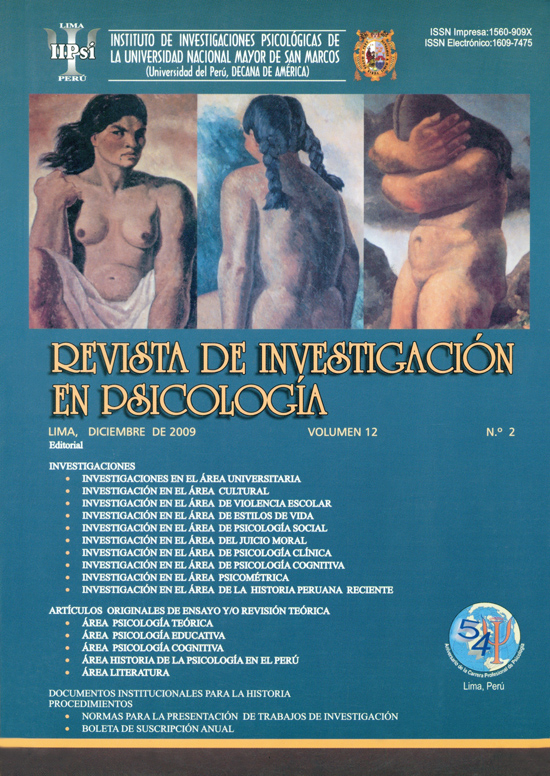Predisposition towards hallucinatory experiences in Peru: examining the continuity-pathology in normal individuals clinical and nonclinical
DOI:
https://doi.org/10.15381/rinvp.v12i2.3760Keywords:
hallucinatory experiences, cognitive-perceptual schizotypy, dissociation, absorption, fantasy pronenessAbstract
The purpose of the present study is to test whether hallucinatory experiences respond to the dimensionality principle and to detect potential differences between a group of “hallucinators” and a group of “non-hallucinators” with regard to personality traits in 214 Peruvian undergraduates students (non-clinical sample) and 30 outpatients (clinical sample). Among a sample of undergraduates, it was predicted that those who reported a number of anomalous perceptual experiences would score higher than nonexperiencers on the hallucination prone (auditive, visual, hipnagogic/hipnopompic and tactile), fantasy proneness, absorption, dissociation, and the cognitive-perceptual factor of the schizotypal questionnaire. All the predictions were significantly confirmed except those concerning interpersonal and disorganized schizotypy.Downloads
Published
Issue
Section
License
Copyright (c) 2009 Alejandro Parra, Luis Espinoza P.

This work is licensed under a Creative Commons Attribution-NonCommercial-ShareAlike 4.0 International License.
THE AUTHORS RETAIN THEIR RIGHTS:
a. The authors retain their trademark and patent rights, and also on any process or procedure described in the article.
b. The authors retain the right to share, copy, distribute, execute and publicly communicate the article published in the Journal of Research in Psychology (for example, place it in an institutional repository or publish it in a book), with acknowledgment of its initial publication in the Journal of Research in Psychology.
c. Authors retain the right to make a subsequent publication of their work, to use the article or any part of it (for example: a compilation of their work, lecture notes, thesis, or for a book), provided that they indicate the source. of publication (authors of the work, magazine, volume, number and date).























